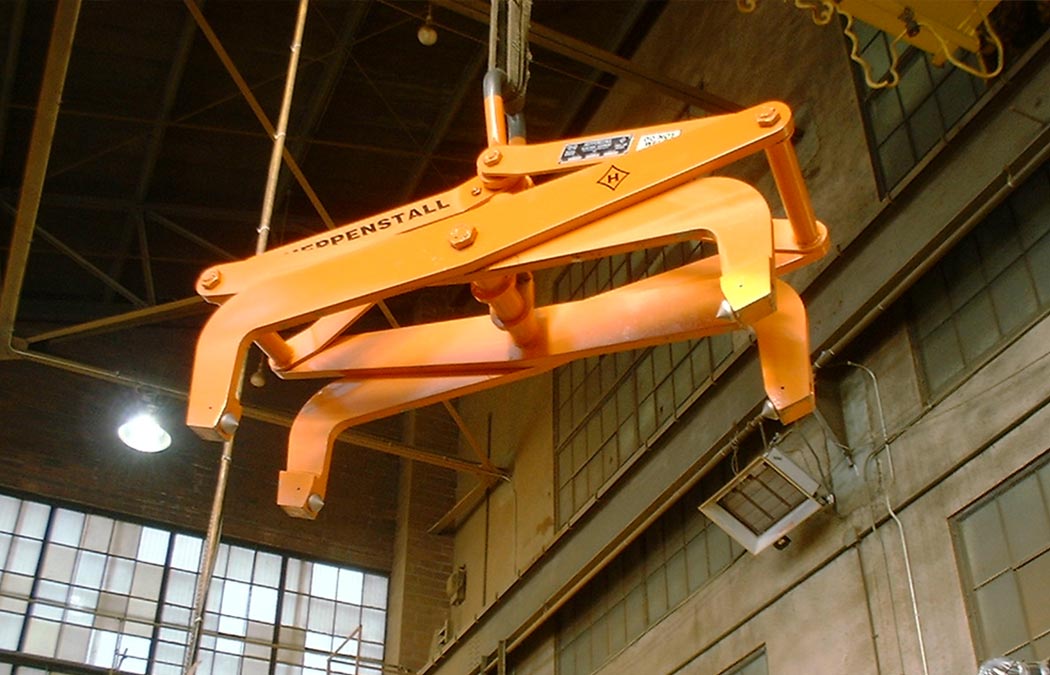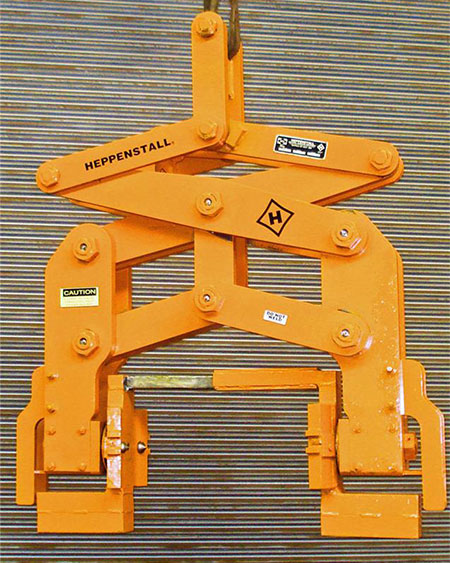What Goes on Below the Hook?

/ Blog
Below the hook devices are a vital, interchangeable part of many cranes. Since Morgan acquired Heppenstall in 2009, our range of below the hook lifting devices has significantly expanded, allowing our team of engineers to design customized crane lifting equipment.
Pre-Design Checklist for Crane Lifting Devices
There are three vital pieces of information our engineers need to know before beginning the crane design process.
- Capacity: It’s essential to account for the crane’s total capacity, including the weight of the expected load and the below the hook device. Ensuring the combined weight does not exceed the crane’s capacity is crucial to maintain safe operating conditions.
- Load: The size and shape of the expected load can also determine which crane lifting device will be the most effective.
- Environment: The conditions of the building or area the crane is in can reduce the mobility of the crane and the below the hook lifting device. The best design accounts for the building dimensions, extreme temperatures, and other obstacles that can narrow down which crane attachments are

This parallel linkage down ender can grab parts to rotate and flip parts around with accuracy.
Designing Crane Attachments for All Cranes
Cranes can look vastly different depending on the manufacturer. Fortunately for those in the market of below the hook devices, what’s above the hook doesn’t impact the design as much as the function the device will be performing. The right crane attachment can reduce rigging time, and produce a safer lift.
With our Morgan and Heppenstall history combined, we have decades of drawings to pull from. Whether your overhead crane is a Morgan design or not, we can make a crane lifting solution for you. We prioritize reliability in our crane designs, and below the hook crane attachments are no exception. Popular below the hook lifting devices include tongs, coil grabs, ingot lifters, slab lifters, and buckets. If you’re looking for a simple pair of tongs or a fully automated coil grab system, an optimized solution is possible.

Convector plate tongs on an overhead crane.
Inspections and Maintenance
Regular inspections and maintenance of overhead cranes are mandatory according to CMAA & AIST standards. Unfortunately, below the hook lifting devices are often overlooked, leading to equipment failure and potentially severe accidents.
Review our blog post “Crane Inspections: Recommendation, Requirements, and Schedules” to familiarize yourself with industry standards and best practices. Proactive maintenance and routine inspections can significantly reduce the likelihood of crane lifting equipment failures, costly repairs, and safety incidents, ultimately minimizing downtime.
Get a Quote on Customized Crane Attachments
Explore our extensive range of overhead crane accessories and below the hook lifting devices available, or consult with our custom engineering experts to have a solution tailored to your specific needs.

